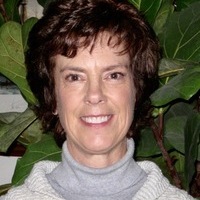
The Most Popular Horse Breeds Of 2019
Equestrian Advice & Guides General Equestrian
Build your business profile for FREE and expose your services to thousands of potential clients!
Create my profile now!
Every horse person knows the terror of the word “laminitis.” But what is the reason for this devastating disease? A specific singular cause is not known. Instead, laminitis is a multifactorial syndrome, meaning numerous elements may contribute to the development of clinical signs.
First, what is laminitis? It is an inflammation of the laminae. These interdigitating layers of tissue act to support and secure the coffin bone to the hoof wall. The laminae contain extensive blood and nerve networks.
In the face of inflammation, the laminae cannot swell since they are confined within the rigid hoof structure. As a result, a disruption of blood flow, aggravated nerves, and weakening of the connections between the coffin bone and the hoof wall occur. In severe cases, the additional force applied by the deep digital flexor tendon on the coffin bone can cause it to rotate, sink, or protrude through the sole.
Are carbohydrates, i.e., sugars and starches, in part responsible for laminitis? The simple answer is yes; carbs are one of the primary risk factors.
What are the RISK factors that correlate with carbohydrate loads?
What are other CONTRIBUTING factors to laminitis?
So how do carbohydrates influence the occurrence of laminitis? The precise mechanism is unknown. There are a couple of theories that may help explain the process:
A. When a horse ingests a diet high in carbs, it can unbalance the normal hindgut bacteria. When this happens, the harmful bacteria produce toxins that enter the bloodstream. Toxins cause inflammation, and since the sensitive laminae are unable to respond to inflammatory insults, laminitis results.
B. Diets high in carbohydrates cause an increase in the level of insulin released into the bloodstream, which leads to the development of laminitis.
In this second proposal, the question is, how does excess insulin result in signs of laminitis? Several theories are listed below on how this occurs, but first, let’s examine insulin’s role in the body.
Sugars and starches convert into glucose in the stomach and small intestine when a horse ingests food. Glucose then passes into the bloodstream, where it provides energy for the body’s cells. The glucose, however, cannot get into the cells without the help of insulin.
Insulin binds with receptors on the cells, “unlocking the door” and allowing the glucose to enter. If there are faulty connections to those doorways, the glucose can’t get inside and do its job. Glucose thus remains high in the blood. The pancreas continues to pump out insulin in an attempt to lower the blood sugar. Excessive insulin in the blood is called hyperinsulinemia.
Research is ongoing, but the following unconfirmed theories on how hyperinsulinemia causes laminitis are listed below:
What actions can prevent laminitis from occurring? Here are some suggestions:
*Minimize carbohydrates.
**Feed diets low in sugars and starches and high in fiber.
**limit grass intake, especially in spring.
*Prevent obesity
** minimize caloric intake.
** exercise.
*Prevent as many risks and contributing factors from occurring together. *Contact your veterinarian for routine physicals and blood work to monitor for the early signs of laminitis and discuss options for maximizing health and minimizing occurrences.

